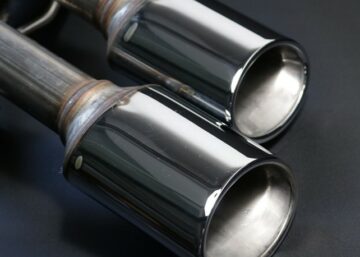There is no industry in the world that is more fast-paced and dynamic than the automotive industry. Over 100 years ago, the introduction of mass production on an assembly line made the automobile affordable to the everyday worker. Today, bespoke super cars and one-off masterpieces represent future technology that drives innovation for modern cars forward. It’s important to remember that incredible technology like durable interior finishes, bright LED lighting, and even modern types of automatic transmissions are a direct result of prototype auto parts manufacturing and conceptual vehicles.

Why Automotive Manufacturers Use Prototypes
When you look at the modern automobile, you may just see a method of getting to work or picking your kids up from school. What you are actually seeing is the result of thousands of hours of blood sweat and tears put in by engineers to make sure your vehicle is as efficient and safe today as it is in 10 years. To achieve this result, automotive manufacturers rely on automotive prototyping to properly test parts of your vehicle that are under constant duress and usage. Since the automotive design process is long and arduous, speed and availability of prototype auto parts is a key component to the successful development of any new vehicle. In fact, every stage of the concept relies on the effective production of automotive prototype parts.
Your boring commuter car is a result long drawn out process that starts off as a complete concept. It is in this concept stage that engineers and designers must work together to produce products that are both beautiful and functional. This fine dance is really where automotive part prototyping comes into play as manufacturers have the ability to test parts in their highest design stages to ensure complete durability over their lifetime. This is known as design verification and its usage is only achieved by utilizing prototype parts.
As the concept process continues, manufacturers need to move beyond the simple practicalities of producing parts on a small scale and ensure that these parts can be produced on a large scale in a cost-efficient manner. This process, known as production process validation, ensures that manufacturers are able to produce these parts at their own facility, for a certain price, on a scale that truly boggles the mind. It is during this design and verification process that any issues will quickly come to light.
Commonly Prototyped Automotive Parts
There are several categories of parts that are commonly put through the automotive prototype process on new vehicle designs. As consumer demand changes, automotive manufacturers rise to the occasion by creating designs that are both functional and beautiful. If it were not for the prototype process, design and function would rarely have the synergy necessary to convince consumers to purchase new vehicles.
Here are some of the most commonly manufactured prototypes:
Interior Parts:
- Dashboards
- Consoles
- Air Vents & Ducts
- Steering Wheel
- Central Control Panel
- Arm Rests
- Door Panels
- Speaker Grilles
- Switch Plates
- A, B, C & D Pillars
- Trim Pieces
Exterior Parts:
- Bumper
- Grilles & Grille Covers
- Emblems & Plates
- Headlights
- Taillights
- Fog Lamps
- Mirror Housings & Mounts
- Door Handles
- Spoilers & Air Dams
- Trunk Lids
- Chrome Trim
- Fenders & Fender Liners
Functional/Engine Bay
- Air Components
- Air Filter Housing
- Engine Cover
- Shifting Device Lid
- Battery Components
- Fuel Tanks
Prototyping Production Methods
There is a wide array of technologies that are used in the production of auto prototype parts. As technology has evolved, proven manufacturers have not only adopted but enhanced the methodology and processes required to successfully produce parts for the automotive industry. Here are just some of the technologies employed in today’s manufacturing world.
CNC Machining
CNC stands for Computer Numerical Control and it is the absolute standard for manufacturers around the world. Typical configurations for CNC Machines include mills, lathes, plasma cutters, laser cutting, and electric discharge. Whether it be plastic, sheet metal, or even solid metal stock; CNC machines use precise controls to turn concepts into reality. It’s important to note that depending on the intricacy and type of work needed, manufacturers are able to meet demand. For example, a prototype plastic component can be produced in a very quick manner to facilitate the automotive prototype process with great speed and flexibility. Learn more CNC machining capabilities for your projects here.
Urethane Vacuum Casting
Urethane-Vacuum casting is a unique technology that allows for incredibly quick production when complex machining is neither practical nor necessary. The process uses silicone molds and does not require complex tooling. It is ideal for short runs or parts or for fit and finishes testing, such as the testing done during the prototype process. Typically, the per-unit price is higher than something like injection molding. This is perfect for small batches.
Injection Molding
Injection molding is done to produce a high number of parts, extremely consistent, and with a low degree of failure. In short, this technology injects molten material into a mold that is carefully machined. It requires extensive tooling to create the mold, thus requiring additional upfront investment vs. urethane vacuum casting which uses cheaper silicone molds. This is a fantastic solution for larger production runs, especially during the prototype process where significant amounts of spec parts may be required to facilitate final testing. As technology has evolved, so has a manufacturing process for injection molding and it is now faster than ever.
3D Printing
3D printing (SLA or SLS) is a process of production that uses extremely thin layers of various types of material to build a three-dimensional object. This technology has come into focus the last couple of years, especially as machines have shrunk in size so that hobbyists and tinkerers can use them at home. For highly precise applications or for bespoke componentry, this is a great option.
Post Production Services
Once a part comes off a 3D printer, CNC machine, etc., it’s often rough and bears the marks of the machining process. In order to facilitate the delivery of a finished part for the prototype process, manufacturers turn to post-production methods. These methods include the following but keep in mind there are many more.
- Painting
- Printing
- Chrome plating
- Texturizing
- Powder Coating
- Sanding
- Polishing
- UV Treatments
- Anodizing
- Electroplating
Why Prototype Auto Parts Make Sense
When attempting to create the world’s next great automobile, prototype auto part manufacturing is key to the success of the final product. This evolving industry allows manufacturers the freedom to create more fuel-efficient, durable, and beautiful machines by providing the parts that are at the intersection of beautiful design and functionality.
Whether it’s a high volume of injection-molded dashboards for a final production verification or a bespoke, specialized part for a pre-production mule; the prototype auto part industry has a fantastic solution.




